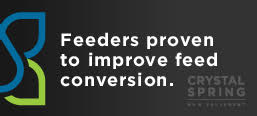Let go of the past and focus on the future
If we can look back each year and not forget what happened to us or did not happen but let go and move forward, it makes the yearly transition easier. So, as I count the years of serving agriculture farmers and the farming community now 51, I hold my head high because of the pleasure privilege and honour it is for me.
Oh, that doesn’t mean without challenges but serving food producers is a high calling for me and I hope the good Lord gives me health and breath so I can continue.
Looking back at my column a year ago, coming off the worst drought in many years and wondering what 2022 would have for us, we did not have long to wait. One farmer told me in January after several major snowfalls how his attitude shifted 180 degrees because of snow-covered fields.
Excessive rainfall for the most part is always better than not enough rain. My father would say, “Harry, I’d rather see some low-spot brownouts in wet years than high-spot brownouts in dry years. There was a much larger surface area than low spots in the high spot realm.”
Taking 2022 at face value, grain and special crop prices are still at record levels but input costs and fertilizer prices are also at record levels and don’t drop the same way the commodity prices do.
Also, many rotations shifted in ‘02 because of seeding, crop insurance dates, field conditions, and commodity prices. In 2023 those same farmers will be hoping to put the rotations back in concert with nature and the surrounding soil.
Many farmers are concerned about what the federal government will do with fertilizer emission targets and other so-called creativity to show the world how to solve the climate change issues from small Canada.
I like what farmer speaker and writer Jake Leguee said, “Don’t Tell Farmers How to Farm – Ask Them Instead” which refers to how many people outside of agriculture try to make policy for farmers.
That is the biggest issue facing farmers in Western Canada. Yet, the Feds create uncertainty with their thoughts on how to fix climate change when farmers are the best environmentalists in the world. Why? Because their livelihood and that of their children in many cases depend on it.
In December I attended the Prairie Livestock Expo or in the past Hog & Poultry Days. It was so exciting to see the hall full of exhibits and still better even fuller with producers looking at the new information and improving in some cases. While a one-day event, I caught the day before with some participants and the day after. The hall buzz kept increasing, showing enthusiasm for the industry, also catching up after not having this event since Dec 2018.
The hog business while having bigger risks with higher prices and higher input costs also coming off a tonne of uncertainty and ups and down during COVID-19 is in good shape. Seldom do the packers and producers make or lose money at the same time. Now, packer margins are tight because pork demand is up, production is down a little, and most are looking for more pigs to slaughter.
The cattle business while buoyed with abundant feed supplies and good quality margins as absolute price takers continue to flounder. The cow numbers continue to shrink and unless you are a large established producer with a good marketing plan, the smaller cow-calf producers take off-farm jobs to support the cattle business.
With less land and infrastructure needed to get into the sheep business, it grows with individual producers. Canadian sheep producers only supply 40 per cent of the lamb market; the rest come from other countries and imports. So there is room for growth. Let me say, as I did at the beginning, let go of the past so you can move into the future. Here is wishing you a good 2023, and I’m looking forward to meeting you somewhere sometime. •





